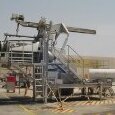-
Posts
583 -
Joined
-
Last visited
-
Days Won
10
Content Type
Profiles
Forums
Store
Gallery
Downloads
Calendar
C-130 Hercules News
Posts posted by pjvr99
-
-
check gimbal assembly - something is worn out
-
I will say there is nothing wrong, nothing to do, nothing to fix - system is
operating within specification. mechanical fuel schedule and electronic
fuel schedule are perfectly matched
-
There is no wrong TIT before correction
-
Do you mean a rise from 'before light out', meaning less than 800 and correcting to 800 to 840 after light
out: yes, it is good. The ONLY, let me repeat that, ONLY requirement is a correction of 800 to 840. There
is the rare occasion when the mechanical and electronic schedules are the same and no correction occurs.
If this happens you need to do a proper TD system check.
-
Not much to be done there. Airfield safety should be taking care of birds thru keeping grass verges short, falcons, etc. Nothing a crew can do
once they're committed to land or take off
-
Ok cool
-
So did you get it fixed?
-
Thank you. based on this and your previous mentioning the shift
to another engine, it sounds like you have a rollback, a problem
with the synchrophaser. Check out synchrophaser, sych rack, and
also run synch box tester. sometimes the problem can be a false
signal generated by a seemingly good valve housing. also check
all 4 prop pulse generators.
-
is this in level flight, during a ground run, taxi, descent, take off? what are throttle sttings?
-
Can you give us some more information ...??
-
better to compare fuel burns, range, payload, multi-role features, and ,aintamamce costs per flight hour ..... stuff like that
-
problem is turbo props dont work in thrust, and turbo fans dont work in torque or horsepower.
-
You missed 1 item hehe: one of the drivers riding the brake pedals during landing
-
Its XB3 - throw away, install new
-
What do you mean by 'stabilize'? Rpm, TIT, fuel flow? Is there any unusual sound (barking) on downshift?
-
4 hours ago, Newbie said:
Do you perform preservation IAW 1C-130H-2-00GE-00-1, chapter 5-29.7?
No, but then I have never seen this before either. Having read through it, it appears to be a more intensive version of
the test cell procedure ..... I believe if I actually used it, my bosses would have me hung, drawn and quartered for
the time it would take to do. Thank you for the reference, it did provide an answer for me
-
correct. do a rich/lean check to be sure that the fcu schedule is
within limits: not to exceed 100°c rich or 70°c lean
-
Only limitation is TIT after light-out must be 800°C to 840°C. There is no limit for before
light out, meaning TIT before could be 1000°C or 700°C as long as it corrects to the
specified range when the light goes out. All it means is the fuel control is very rich or
very lean at that position in the schedule.
-
Hey guys
I have a question for the engine test cell and AMARG people. When doing preservation of the engines, T.O. 2J-T56-56 says
to do it iaw 2J-1-18. I have read it several times (to be sure) but can find no reference to T56 engines. Only thing that has a
specified procedure is the 1C-130B-2-4CL-2 used by test cell. Does anyone know why the 2J-1-18 would be referenced? What
do you guys use?
Thanx
PJ
-
Hey guys
Looking for COMMERCIAL ATA chapter 5
for L100/L382
Is there anyone can assist me with this?
Tnx
PJ
-
14 hours ago, munirabbasi said:
1C-130B-2-4
Thought that was rescinded in favour of 2J-T56-56 and job guides .....
-
yes. fuel control is just very rich at that point in schedule - nothing to be concerned about
unless you out of limits on rich/lean check
-
you're not gonna like this, but look for bent tower shaft or bearing failure in adh
-
Hey guys
Looking for a book in digital format: SMP1522
Is there anyone can assist me with this?
Tnx
PJ



Oil Loss In Flight
in C-130 Technical
Posted · Edited by pjvr99
Lockheed Service News V18 #3 contains a brilliant explanation of causes and troubleshooting
of oil dumping. It was later made into a service bulletin. I suspect you may be looking at RGB
scavenge failure